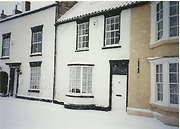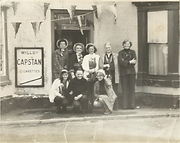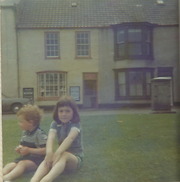 Hartlepool Sports & Leisure
Hartlepool Sports & Leisure
- Cinemas, Theatres & Dance Halls
- Musicians & Bands
- At the Seaside
- Parks & Gardens
- Caravans & Camping
- Sport
 Hartlepool Transport
Hartlepool Transport
- Airfields & Aircraft
- Railways
- Buses & Commercial Vehicles
- Cars & Motorbikes
- The Ferry
- Horse drawn vehicles
 A Potted History Of Hartlepool
A Potted History Of Hartlepool
- Unidentified images
- Sources of information
- Archaeology & Ancient History
- Local Government
- Printed Notices & Papers
- Aerial Photographs
- Events, Visitors & VIPs
 Hartlepool Trade & Industry
Hartlepool Trade & Industry
- Trade Fairs
- Local businesses
- Iron & Steel
- Shops & Shopping
- Fishing industry
- Farming & Rural Landscape
- Pubs, Clubs & Hotels
 Hartlepool Health & Education
Hartlepool Health & Education
- Schools & Colleges
- Hospitals & Workhouses
- Public Health & Utilities
- Ambulance Service
- Police Services
- Fire Services
 Hartlepool People
Hartlepool People
 Hartlepool Places
Hartlepool Places
 Hartlepool at War
Hartlepool at War
 Hartlepool Ships & Shipping
Hartlepool Ships & Shipping

Seaton Green
Details about Seaton Green
Images of Seaton Green.
Location
Related items :
 Cenotaph, Seaton Carew
Cenotaph, Seaton Carew
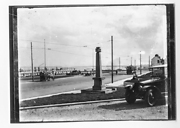 Donated by Hartlepool Museum Service
Donated by Hartlepool Museum ServiceThe cenotaph at Seaton Carew erected in 1923. It is located on the Green. There are several old cars and a trolley bus in the picture.
More detail » Cenotaph, Seaton Carew
Cenotaph, Seaton Carew
 Donated by Hartlepool Museum Service
Donated by Hartlepool Museum ServiceThe Cenotaph on The Green at Seaton Carew. The Seaton Hall Hotel can be seen in the background.
More detail » Dixon of the Green
Dixon of the Green
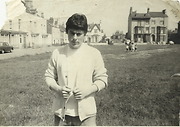 Created by unknown
Donated by Phil and Penny Dixon
Created by unknown
Donated by Phil and Penny DixonA youthful Phil Dixon on the north-west corner of The Green. On the left (West Row), is Seaton Hall which was built as the King’s Head Inn in 1803. The building became a private house in 1886 and was eventually converted to become a nursing home. The house just visible over Phil's left shoulder was built in 1834 in the 'Swiss style' for a local solicitor, Robert Dixon. The larger building on the right once housed a school.
More detail » George and Dragon Inn
George and Dragon Inn
 Created by Miss Parish
Donated by Bowes Museum, Barnard Castle, County Durham
Created by Miss Parish
Donated by Bowes Museum, Barnard Castle, County DurhamPart of the Part of the Pattison's Photograph Collection collection
A sketch drawn by Miss Parish c1800 showing the George & Dragon Inn which was built prior to 1812 and eventually became the Norton Hotel. In the early days a large clientele of respectable tradesmen & gentleman farmers along with their families used the hotel. The small cottages next to the inn made way for large houses that still stand today.
More detail »
 George and Dragon Inn landlords
George and Dragon Inn landlords
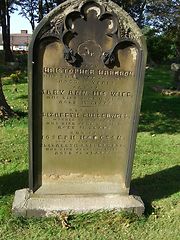 Created by Maureen Anderson
Donated by Maureen Anderson
Created by Maureen Anderson
Donated by Maureen AndersonDated 2007
The Inn was standing at least as early as 1812 as it is mentioned in Tate's booklet of that year. Robert Harbron is recorded as having been landlord of the Inn in 1829. He died aged 68 (newspaper death notice gives his age as 72) on 13 September 1835 and was buried in All Saints Churchyard, Stranton on 16 September 1835. His son Christopher who was born in 1811, took over as landlord. Christopher married Mary Ann Hodgson of Sunderland on 27 April 1840.
Newcastle Courant - 20 February 1841: 'To be sold by public auction at the house of Mr Christopher Harbron, Innkeeper, at the sign of the George and Dragon, in Seaton Carew in the County of Durham, on Thursday the 25th February 1841, at twelve o'clock, at noon (Messrs Sotheran, Auctioneers) the above old-established and well-accustomed Freehold Inn, eligibly situate on the North side of the square, in Seaton Carew aforesaid, together with the coach-house, stables and other requisite conveniences immediately adjoining, and occupied therewith. Seaton Carew, well knownas a much frequented bathing place, is distant about ten miles fromthe townof Stockton-on-Tees, and about three miles from the flourishing port of Hartlepool. The Stockton and Hartlepool Railway passes within a quarter of a mile from the village,which may be expected to participate in the advantages arising from the immediate vicinity of an extensive and increasing commerce.'
Christopher Harbron died on 30 June 1863 aged 55 and was interred in Holy Trinity Churchyard. His wife, Mary Ann, had died just 12 days before. By the time of their deaths their address was no longer an Inn but a lodging house.
In October of 1863 the building was advertised for sale and then in January 1864 to let. 'The house has lately been kept as a private boarding and lodging house, but the licence is still renewed.' At this time it was run by Miss Hodgson.
In September 1869 Mr Hopper applied for a spirit licence but it was refused because, although the property did have accommodation, it had not been used fror some years as an Inn.
In 1870 the Inn was in the possession of George Sewell and was being advertised to be sold for £900 or let for £50 freehold.
More detail »
 Seaton Hall
Seaton Hall
The building was erected on the west side of the Green in 1803 by Robert Henry McDonald as the King's Head Inn. In June 1806 Nathan Leng became landlord, by April 1809 Robert Battey had taken over and by 1812 William Oliver. In December 1825 RH McDonald was advertising the Inn and land to be let. By 1827 it was occupied by William Webster who, in 1829, advertised the inn to be let for a term of years: 'with Stables and Other Conveniences and 61 1/2 acres of land, six stints on Seaton Snook. Together with or without the adjoining commodius Dwelling-House used as a Lodging-House'.
It became the property of Richard Walker and on his death in 1831 it was advertised by Anthony Walker to be sold by auction: 'The above premises have for many years been occupied by genteel families during the bathing season, for which purpose they are admirably adopted.' In 1839 the Inn was being advertised to let with the present tenant named as Anthony Walker.
From 1851 to 1861 Margaret Walker was the landlady (possibly Anthony Walker's daughter) & between 1862 & 1872 the inn was bought by JW Richardson who completely transformed the building & grounds. The stables & coach houses were converted to summer houses for the guests & croquet grounds were laid out.
William Thomlinson purchased the building in 1882 & converted it into a private residence re-naming it Sea View House. The house later became known as Seaton Hall. Thomlinson lived there until his death in 1943. In May 1945 the house was advertised for sale by auction at the Grand Hotel as being an:
'ivy clad house that stands back from the main road and contains entrance hall, with oak floor; oak panelled dining room, with two large bay windows; charming drawing room with large bow window overlooking the lawn; oak panelled inner hall, oak panelled morning room with two bay windows and fine fireplaces; telephone room, housemaid's pantry, cloakroom, excellent kitchen with Anglo-Simplex Range, larder etc on the ground floor. On the first floor is the handsome library, fitted with mahogany bookcases; 4 principal bedrooms, dressing room with fitted cupboards and wardrobes; 3 bathrooms and 2 maid's bedrooms. On the second floor are 4 good bedrooms whilst over is a large playroom known as 'The Crocodile' owing to it being fitted with panelling and doors from a steamer of that name wrecked in the Bay. At the rear of the house is the lawn with gravelled paths together with the garden, sitting room, flower room, conservatory and vinery. Close by is the large walled garden, with tennis court, lawns, rose beds and herbaceous borders and kitchen garden with fruit trees and bushes. The residence is fitted with fine panelling, beautiful fireplaces and doors; central heating with concealed radiators and all modern amenities and is in a very good state of repair and decoration. The outbuildings include heated garages for four cars laundry, boiler house, harness room, store room etc.'
In April 1946 a catering licence for Seaton Hall Guest House to operate as a catering establishment was granted to Mrs EE Rawsthorne of 25 Spring Garden Road, Hartlepool 'for guests who will stay less than five days and also for more permanent boarders but it is not intended to operate as a cafe.'
By 1951 the building had become the Seaton Hall Hotel and was taken over by Mrs Cora Hudson. In 1954 the Hotel was for sale. There was a suggestion of the council purchasing the building as an old folks home but this was decided against because of the future cost of repairs on such an old building. The Hotel closed and remained so until 1956 when the West Hartlepool Education Committee rented the building as temporary accommodation for students of the fire damaged College of Art. The lease was to run until September 1957.
In May of 1975 the Hotel was being advertised for sale as 'lavishly improved' and with '17 letting bedrooms.'
In 1988 the building was converted to become a nursing home by the present (2020) owners. Many of the original features such as panelling and the fireplaces have been retained.
More detail »
 Seaton Hall (1)
Seaton Hall (1)
 Created by James Whitehead Pattison
Donated by Bowes Museum, Barnard Castle, County Durham
Created by James Whitehead Pattison
Donated by Bowes Museum, Barnard Castle, County DurhamPart of the Part of the Pattison's Photographs collection
Dated 1888
North-west corner of the Green showing the large ivy covered Seaton Hall which started life in 1803 as The King's Head Inn. At the time of this image the Hall belonged to Colonel Thomlinson.
More detail » Seaton Hall (2)
Seaton Hall (2)
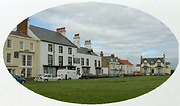 Created by Maureen Anderson
Donated by Maureen Anderson
Created by Maureen Anderson
Donated by Maureen AndersonDated 2008
Seaton Hall is now (2015) a nursing home. Built in 1803 as an inn it has been a private residence & a hotel over the years. The interior still boasts many original features such as fireplaces & wood-panelling.
More detail » Seaton Hall Hotel
Seaton Hall Hotel
 Donated by Hartlepool Library Service
Donated by Hartlepool Library ServiceSeaton Hall Hotel, The Green, Seaton Carew was built as the King's Head Inn in 1803. The premises are now a nursing home.
More detail » Shop on the Green
Shop on the Green
A selection of photographs from Phil and Penny Dixon of a small shop they used to run at No.15, The Green, Seaton Carew. It is now a private dwelling.
More detail » Silver Jubilee on the Green - 1935
Silver Jubilee on the Green - 1935
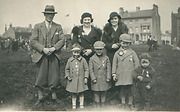 Donated by Raymond Codd
Donated by Raymond CoddDated 1935
A group on the Green at Seaton Carew celebrating the Silver Jubilee of King George V in 1935. The children are wearing the medals handed out for the occasion. All are dressed in their best. Note the gentleman's trousers and the women's furs.
More detail » The Green
The Green
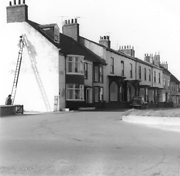 Created by Bill Boagey
Donated by Hartlepool Museum Service
Created by Bill Boagey
Donated by Hartlepool Museum ServicePart of the Bill Boagey collection
The Gable end of a house being painted on The Green, Seaton Carew.
More detail » The Green
The Green
 Donated by Hartlepool Museum Service
Donated by Hartlepool Museum ServicePart of the Stonefield Series collection
A postcard of the Green in the early 20th century showing the large ivy covered house on the corner of Green Terrace.These buildings have all survived.
More detail » The Green
The Green
 Donated by Mike Oxley
Donated by Mike OxleyThe Green, Seaton Carew, Hartlepool. Taken from a postcard of the early 1900s.
More detail » The Green
The Green
 Donated by Mike Oxley
Donated by Mike OxleyThe Green, Seaton Carew, Hartlepool Taken from a postcard of the early 1900s.
More detail » The Green
The Green
 Donated by Hartlepool Museum Service
Donated by Hartlepool Museum ServiceThe Green, Seaton Carew.
The white building to the left started life as the King's Head Inn and became Seaton Hall when owned by Colonel Thomlinson. The animals grazing on The Green probably belonged to him.
More detail » The Green
The Green
 Donated by Hartlepool Museum Service
Donated by Hartlepool Museum ServiceThe Green, Seaton Carew showing The Norton Hotel on the right and the Seaton Hall Hotel to the left.
More detail » The Green 1978
The Green 1978
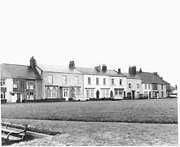 Donated by Douglas Ferriday
Donated by Douglas FerridayPart of the Hartlepool Library Services collection
A south side view of The Green, Seaton Carew taken in 1978.
More detail » The Green looking south (1)
The Green looking south (1)
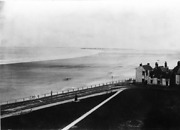 Created by James Whitehead Pattison
Donated by Bowes Museum, Barnard Castle, County Durham
Created by James Whitehead Pattison
Donated by Bowes Museum, Barnard Castle, County DurhamPart of the Pattison's Photographs collection
Dated 1888
The large house on the corner belonged to the Daniel's family. It was demolished sometime after 1900. The drinking fountain on the edge of the grass was donated by Charles Ward Jackson and replaced the stocks that once stood there. Wonder if they were used!!
More detail » The Green looking south (2)
The Green looking south (2)
 Created by Maureen Anderson
Donated by Maureen Anderson
Created by Maureen Anderson
Donated by Maureen AndersonDated 2012
A very different view over The Green in 2012 from that of 1888.
More detail » The Green north west corner
The Green north west corner
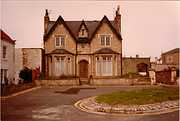 Donated by Hartlepool Library Services
Donated by Hartlepool Library ServicesPart of the Hartlepool Library collection
The present house was built in 1834 by a magistrate, Robert William Dixon. The front was designed to replicate a Swiss chalet. Parts of the rear and sides of the building date back to 1792.
hht&n 2022
More detail » The Green, Seaton Carew
The Green, Seaton Carew
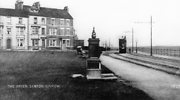 Donated by Hartlepool Library Service
Donated by Hartlepool Library ServiceA view of The Green looking Northwards. What is now the Norton Hotel on the corner and a tram on the right. The water fountain donated by Charles Ward Jackson, now removed, stands beside the footpath.
HHT&N 698
More detail » The Green, north west corner - 1880s
The Green, north west corner - 1880s
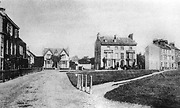 Donated by Maureen Anderson
Donated by Maureen AndersonThe house tucked in the corner was originally built in 1792 and almost completely rebuilt in 1834. The large house to the right was a private school in the 19th century.
HHT&N 556
More detail » The Green, north west corner - 2012
The Green, north west corner - 2012
 Created by Maureen Anderson
Donated by Maureen Anderson
Created by Maureen Anderson
Donated by Maureen AndersonIn November 2012 the Green has not changed a lot since the 19th century except that the brickwork of the buildings has been rendered and painted. The area is listed so there are strict guidelines on what changes can be made to the exteriors of the buildings.
More detail » The Norton Hotel
The Norton Hotel
 Donated by Hartlepool Library Service
Donated by Hartlepool Library ServiceThe Norton Hotel, Seaton Carew, in the 60s. Built originally as the 'George & Dragon Inn' pre 1812.
More detail » War Memorial, Seaton Carew (1)
War Memorial, Seaton Carew (1)
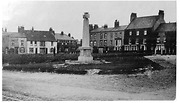 Donated by Maureen Anderson
Donated by Maureen AndersonUnveiled in February 1921 this small cross on a corner of the Green was dedicated to the 23 men from Seaton who lost their lives in World War 1.
More detail » War Memorial, Seaton Carew (2)
War Memorial, Seaton Carew (2)
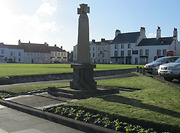 Created by Maureen Anderson
Donated by Maureen Anderson
Created by Maureen Anderson
Donated by Maureen AndersonDated 2012
The War Memorial in November 2012.
More detail »




